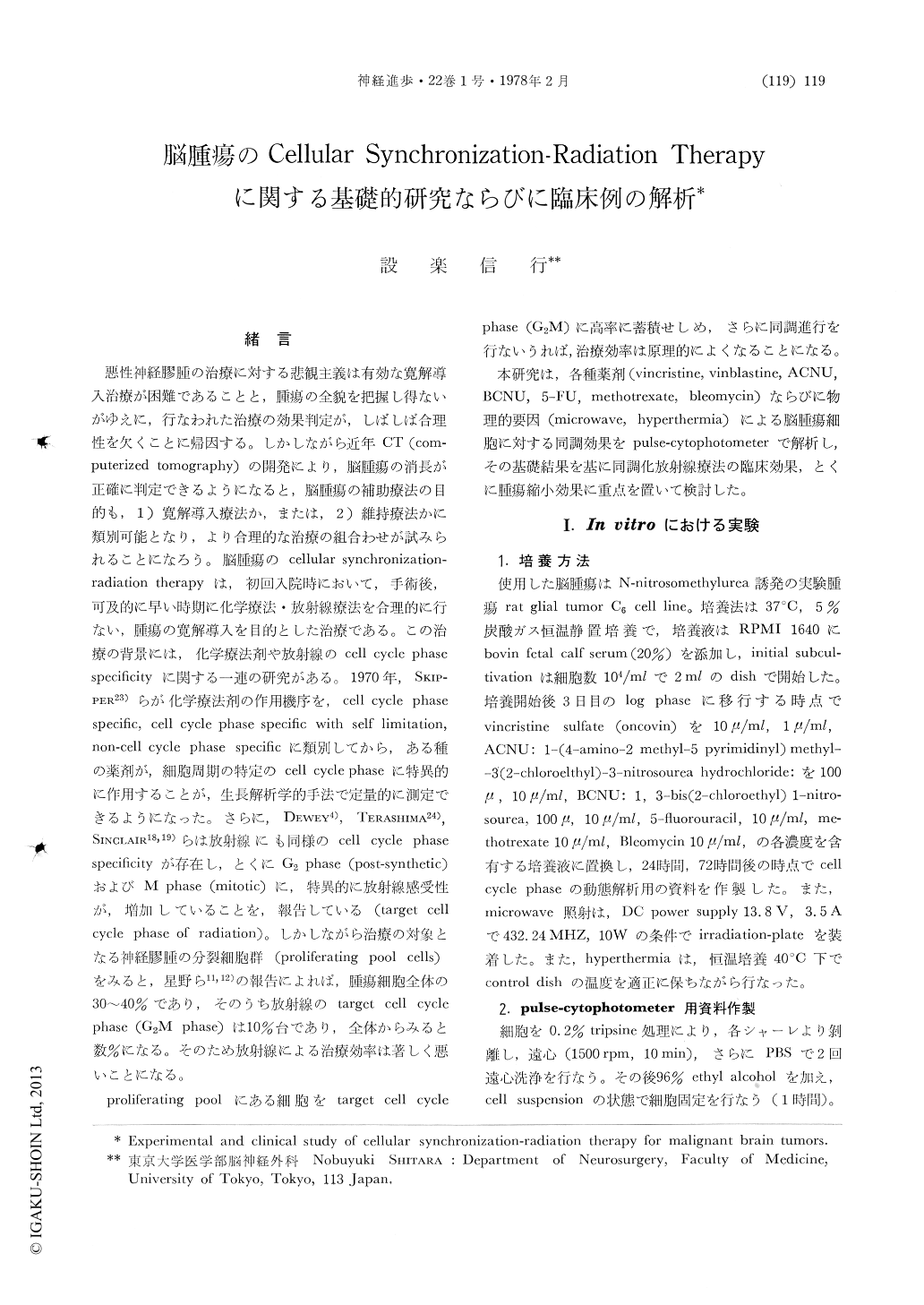Japanese
English
- 有料閲覧
- Abstract 文献概要
- 1ページ目 Look Inside
緒 言
悪性神経膠腫の治療に対する悲観主義は有効な寛解導入治療が困難であることと,腫瘍の全貌を把握し得ないがゆえに,行なわれた治療の効果判定が,しばしば合理性を欠くことに帰因する。しかしながら近年CT(computerized tomography)の開発により,脳腫瘍の消長が正確に判定できるようになると,脳腫瘍の補助療法の目的も,1)寛解導入療法か,または,2)維持療法かに類別可能となり,より合理的な治療の組合わせが試みられることになろう。脳腫瘍のcellular synchronization-radiation therapyは,初回入院時において,手術後,可及的に早い時期に化学療法・放射線療法を合理的に行ない,腫瘍の寛解導入を目的とした治療である。この治療の背景には,化学療法剤や放射線のcell cycle phasespecificityに関する一連の研究がある。1970年,SKrP-PER23)らが化学療法剤の作用機序を,cell cycle phasespecific,cell cycle phase specific with self limitation,non-cell cycle phase specificに類別してから,ある種の薬剤が,細胞周期の特定のcell cycle phaseに特異的に作用することが,生長解析学的手法で定量的に測定できるようになった。
Summary (Abstract)
Since skipper reported on the cell cycle phase dependendy of chemotherapeutic agents, many rational regimen have been established in the treatment of malignant tumors. Sinclair and Terashima reported that radiation has different specificity on each cell cycle phase of tumor population, and the cells in the G2(post synthetic) and M (mitotic) phase are the most sensitive to cytocidal action of radiation.
The knowledge of cell cycle phase specificity of chemotherapeutic agents and irradiation is important for advancing the regimen of treatment.

Copyright © 1978, Igaku-Shoin Ltd. All rights reserved.


